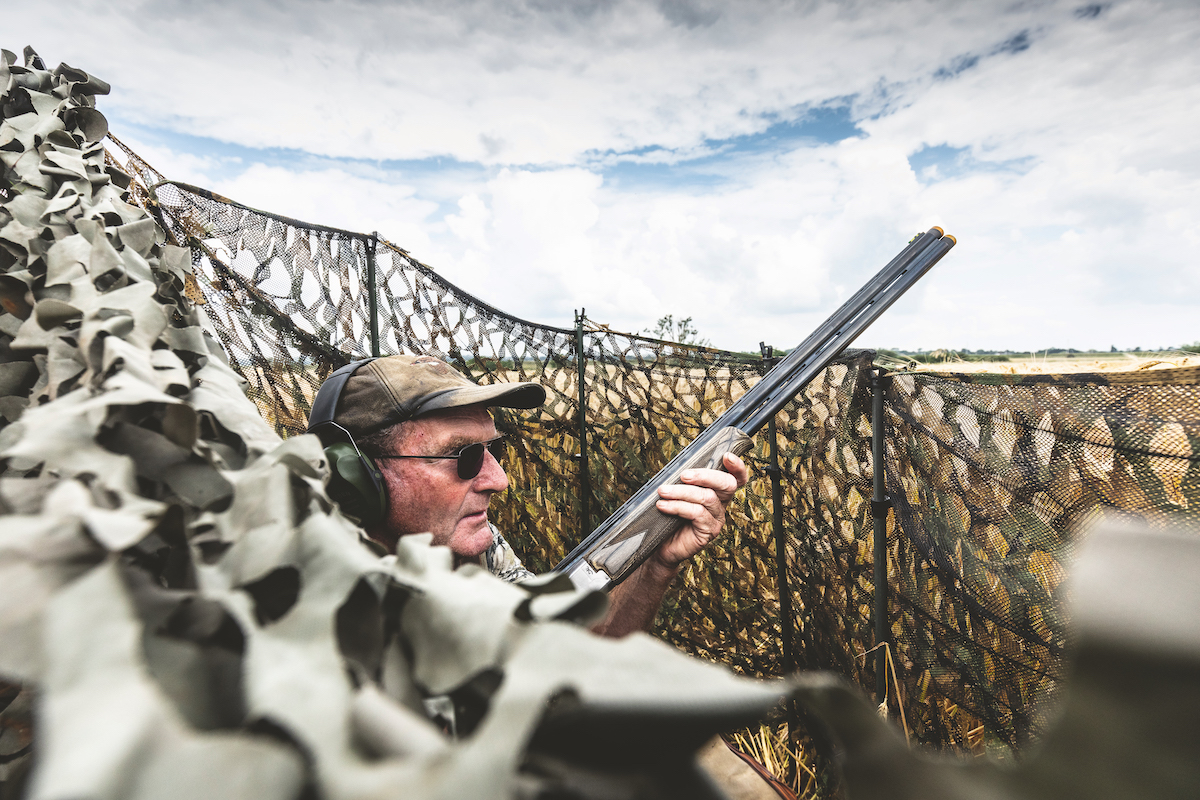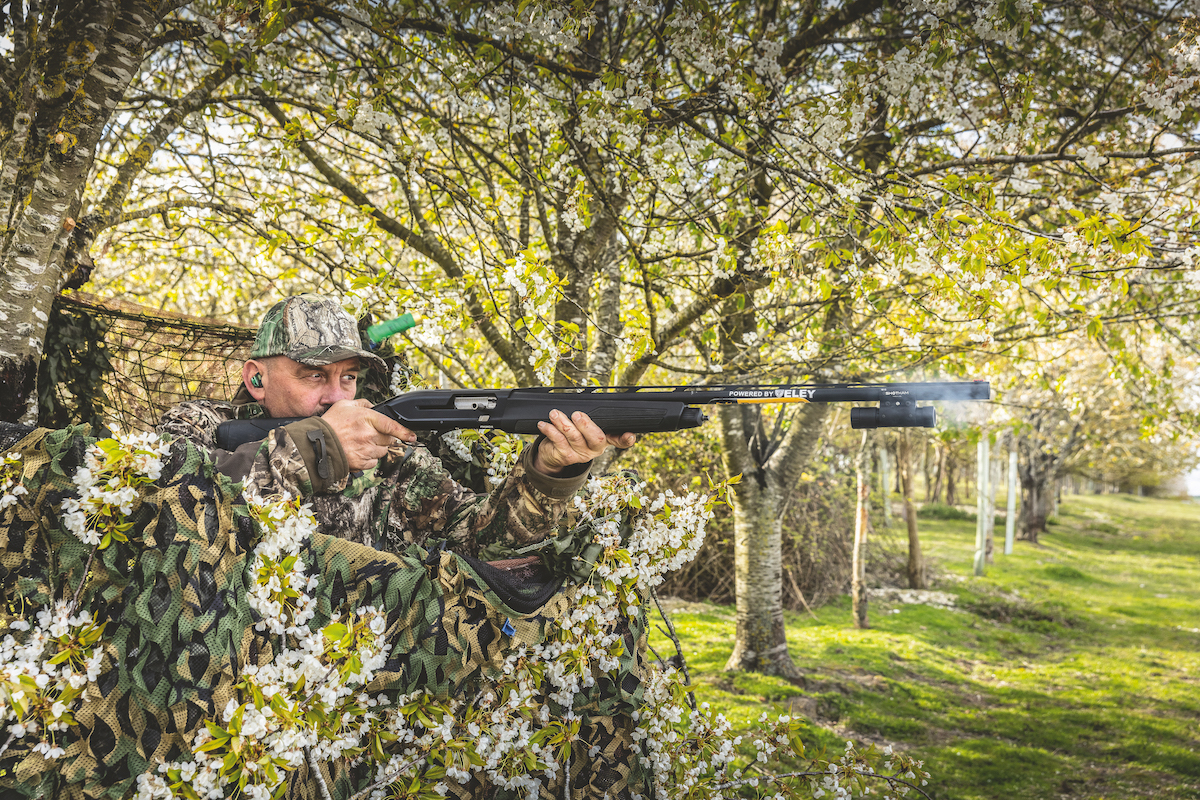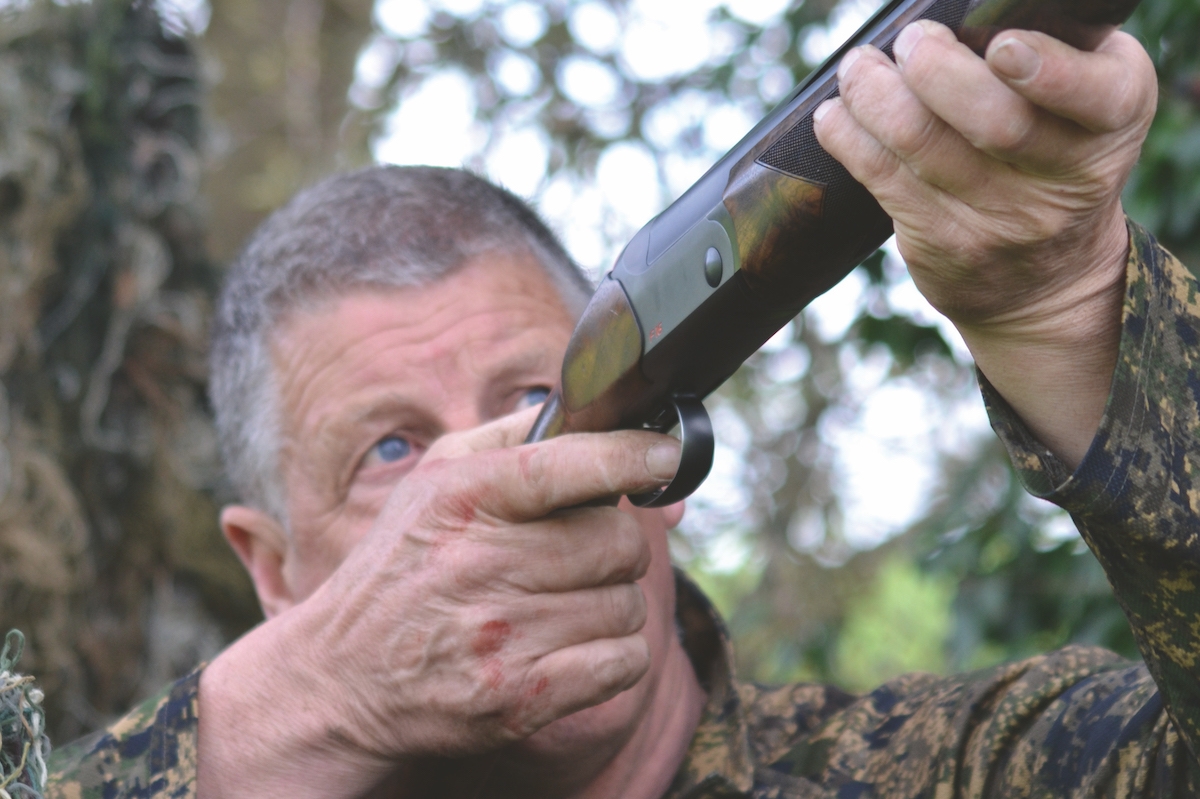Why peas are the best all-around crop for the pigeon shooter
Pigeon shooter Tom Payne heads out on to his much-loved peas this month, but tough conditions keep him working hard to build up the final bag
You’ve heard me say plenty of times that peas are a fantastic all-round crop for the enthusiastic pigeon shooter. From drilling to harvest, if you manage the crop protection over peas correctly, they can reward you with multiple outings.
There has recently been quite a decline in peas being grown in some places. They are not the easiest crop to take through to harvest and can be an absolute nightmare to combine. Add to that the potential for poor yields and you can understand the unwillingness to grow them.
However, partly because of the decline in winter oilseed rape being grown from 2019 to 2021, farmers have had to find a viable break crop to replace it. And so the humble pea, this all-rounder of a pigeon crop, has seen a resurgence, much to the excitement of lots of shooting people.
Switching on
However, I have a theory about new crops in areas that previously didn’t grow them. I believe it takes up to three years for a pigeon population to switch on to a new food source. There will be lots of you I imagine who have recently gained a crop such as peas on your permissions, but I suspect some of you won’t have seen much pigeon action over them yet. But once a pigeon population does switch on to a valuable food source, they will certainly dial in to it, to the extent that they will almost seem to be waiting for it. It’s like ducks and ponds — they come to know.

Federico (right) joins Tom Payne, and the pair set up the hide just in front of the belt of trees, a good 200m along the field
I had some farms with peas on for the first time last year. They shot okay but nothing like you would see in Norfolk or Lincolnshire where they have been growing peas for years. These farms have continued to grow peas again this year, so I’m expecting more consistent crop damage and heavier outings bag-wise. Managing peas and the damage caused to the crop by pigeons needs to be thought out and planned. The reason it’s important to manage your outings is because you want to control crop damage by reducing pigeon numbers, not increase damage by over-shooting and making a pigeon population wary, with the result of just pushing pigeons around the whole crop.
With this in mind, unless the numbers are high over fresh new pea drillings I will leave them alone and let the pigeons gain confidence in that field. The crop itself becomes very vulnerable as it grows and pigeons will quickly get on to the shoots.
By not shooting the drilling, as the crop grows the pigeons become confident, increase in number and then I will step in and give them a hiding. The first cull is very important from a crop protection point of view, so make sure you get your timing and conditions right. You want to make a good dent in the numbers.

Federico makes the final adjustments to the hide, while Tom puts out the decoys

Tom is apprehensive about the afternoon’s action, with the wind direction not ideal
As the crop goes through its different stages of growth, you really want to make sure that you are shooting the crop a maximum of once every two weeks to keep the birds decoyable.
Another factor to consider is the density and speed of growth of tree buds around the field. These will initially draw pigeons away from the crop, but you need to keep a watchful eye because as soon as the buds are over the crop will be vulnerable.
Unfavourable
As everyone I’m sure is fully aware, the weather has been absolutely awful over the past months. It’s been quite miserable for spring — conditions have not been favourable at all.
I did, however, manage to get an outing on an estate that has put peas in for the first time this year. They were drilled incredibly late this year due to wet weather. They were also drilled deep, so they didn’t have much attraction from the local pigeon population and the crop had a very good start. It was only as the peas began to shoot that I started to see an interest.
The majority of this interest was by stock doves for the first week. These have absolutely boomed in numbers around the country. Gone are the days of just seeing a pair here and there; it’s now very common to see 150 to 200 on a field.

Federico swings through a decoying crow; fast reactions are needed for these clever opportunists
As time went on at the pea field there was more and more interest, mainly around the margins through the later parts of the afternoon and in-between the rain showers. Between 75 to 125 pigeons were turning up and it didn’t feel like that was going to increase. As they were all local pigeons, I decided the time was right to shoot.
Maximise the outing
With that sort of number to start with, I would have been very happy to bag 50 to maximise the outing. If they come in singles you can just roll them over, but small gangs of fives every now and then flighting a short line to their chosen field would be an issue.
I had to wait for an afternoon that wasn’t going to be a complete washout. That was easier said than done. You can shoot birds in between heavy rain showers, and sometimes it actually works well, keeping birds moving consistently because they want to get out and feed in the dry spells. But being honest, I just wasn’t keen on getting my kit and Perazzi soaking wet; it really knocks the edge off my enjoyment.
I was being joined by my friend Federico, who came over for the afternoon. There was a good wind and it was dry. However, I had never shot these fields in a north-westerly wind, and it was a fairly strong one too. These fields have always shot better on a south-westerly. (Read here for the benefits of having a shooting partner).
I placed the hide just off the front of the belt of trees, a good 200m along. I used the Enforcer decoys because of the threat of rain, but also because I was informed by the farm manager that the sprayer would be out at some point during the afternoon. Speed of clearance could be key.

A 20-bore is a great choice in the pigeon hide

Federico’s gun of choice is his 20-bore Beretta SL3, combining function and form
Gut feeling
I wasn’t feeling overly confident about the day. I had seen a few birds on the edge when arriving and I wasn’t happy with the wind direction. It’s a gut feeling you get when you know you are in for a tough afternoon. Should I have shot? Possibly not, but the farmer had called and so I was duty-bound.
There were a couple of added problems. Some serious and very noisy forestry work was going on in the belt of trees, and six red kites stayed close all afternoon. We were up against it.
As we sat down, as commonly happens, we got a very early arrival. It suddenly appeared over the brow of the field, low right to left, and was quickly felled into the young peas. Not a bad start as smoke from the fire of old branches being burnt surrounded our hide.
Pigeon shooting can be tricky at the best of times, but when you can’t see anything for being surrounded by smoke you’ve got real problems. As the fire died back, we were in business again.

The pair total just seven pigeons alongside a good handful of crows
We were killing mainly crows, which I have to say was surprising. I knew there had been a few on the crop but I was expecting far more trade from pigeons. Crows can really hug the ground as they approach, so they appear suddenly and need fast reactions. I’ve always decoyed crows a lot closer than pigeons. Their size can make them seem nearer than they are and for some reason I’ve always had much better results decoying close.
Suddenly a woodpigeon appeared. We hadn’t seen too many of them, but with a puff of feathers it fell into the belt of trees, where chainsaws were grinding away.
It was turning into one of those all-too-common days this year. We were killing a reasonable number of crows, but that wasn’t what we were there for and all the shots were much the same. A slow drift over the brow, over their friends I had placed out and bang. That was it.
A final pigeon came over my right shoulder at quite a nice height. It stayed true on line and I swung through, dropping it into the peas. It was time to pull stumps.
Don’t get me wrong, it was a nice afternoon but we could have done with more pigeons. Seven just doesn’t cut it.

The crows are more confident than the pigeons as they drop on to the crop in higher numbers than expected








